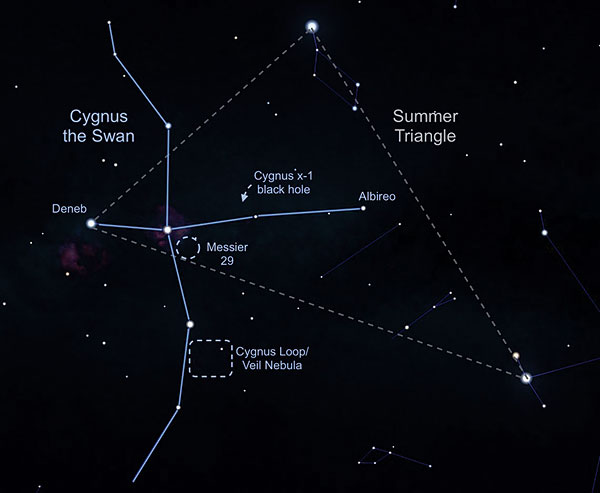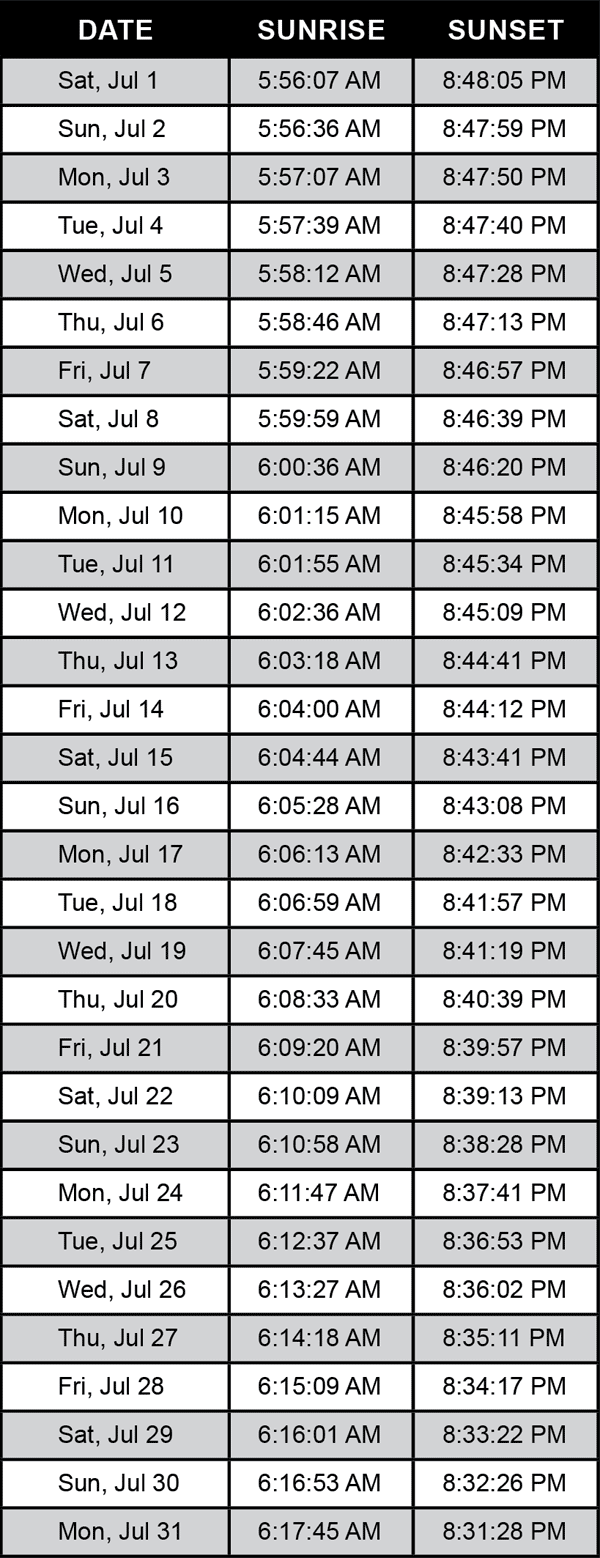|
|
DARK SKY HAPPENINGS - July 2023
Moab
UT (at City Hall)
38O34’ N Latitude
109O33’ W Longitude
4048 ft - 1234 m |
Look Up in the Sky - It’s a Bird
by Theresa Summer
Bird constellations abound in the night sky, including Cygnus, the majestic swan. Visible in the Northern Hemisphere all summer, it is one of the few constellations that look like its namesake! Locate Cygnus by starting with the brightest star, Deneb, which is also the northeastern dimmest star of the Summer Triangle. (Find the Summer Triangle, composed of three widespread bright stars from different constellations, in the eastern sky as night falls this time of year.) “Deneb’’ is an Arabic word meaning tail. Then, travel into the triangle until you see Albireo or the “beak star” in the center of the triangle. Perpendicular from this line are stars that mark the crossbar, or the wings.
From light-polluted skies, you may only see the brightest stars, called the Northern Cross. In a darker sky, the line of stars marking the neck of the swan travels along the band of the Milky Way. A pair of binoculars will resolve many stars along that path, including a sparkling open cluster designated Messier 29, found just south of the swan’s torso star. This grouping of young stars may appear to have a reddish hue due to nearby excited gas.
Cygnus is full of other marvels. While the bright beak star is easy find, a telescope reveals Albireo is a double star, one vivid gold and the other brilliant blue. Furthermore, the Cygnus Loop, sometimes known as the Veil Nebula, is a supernova remnant (leftovers blown off a dying star) directly above the final two stars of the swan’s eastern wing. It’s a faint ring of illuminated gas about six times the diameter of the Moon. Finally, astronomers have detected a high-energy X-ray source in Cygnus that we can’t see. Called Cygnus x-1, it is the first X-ray source to be widely accepted as a black hole. It is just 6,070 light years away astronomically speaking, but it poses no threat to us, just a new way to study the universe. Check out the beautiful bird this evening!
 |
| Look up after sunset during summer months to find Cygnus! Along the swan’s neck, find the band of our Milky Way Galaxy. Use a telescope to resolve the colorful stars of Albireo or search out the open cluster of stars in Messier 29. Image created with assistance from Stellarium: stellarium.org |
Sunrise-Sunset
(The time of sunrise and sunset assumes a flat horizon. Actual time may
vary depending upon the landscape.) |
 |
MOON HAPPENINGS
June 3 - Full Moon at 5:38 am
June 17 - Third Quarter at 7:47 pm
June 17 - New Moon at 12:31 pm
June 25 - First Quarter at 4:06 pm
|
Moab Dark Skies mission is to promote the appreciation and conservation of Moab’s valuable and rare dark skies. Moab Dark Skies was established by the Friends of Arches and Canyonlands Parks in conjunction with the National Park Service and Utah State Parks Division of Natural Resources
For more information, check out our Facebook page. |
|
|
|
|
|
|
|
© 2002-2024 Moab Happenings. All rights
reserved.
Reproduction of information contained in this site is
expressly prohibited.
|
|